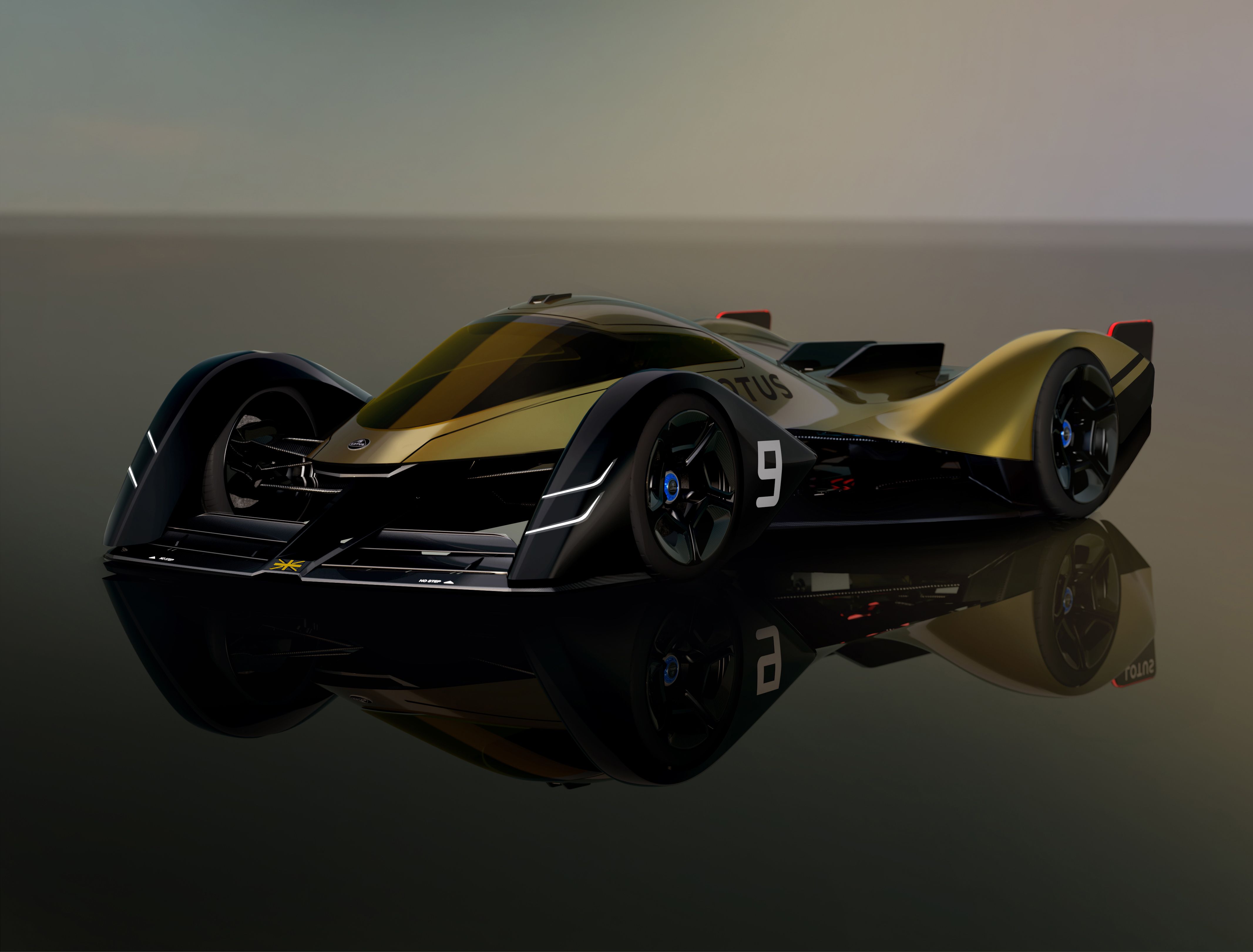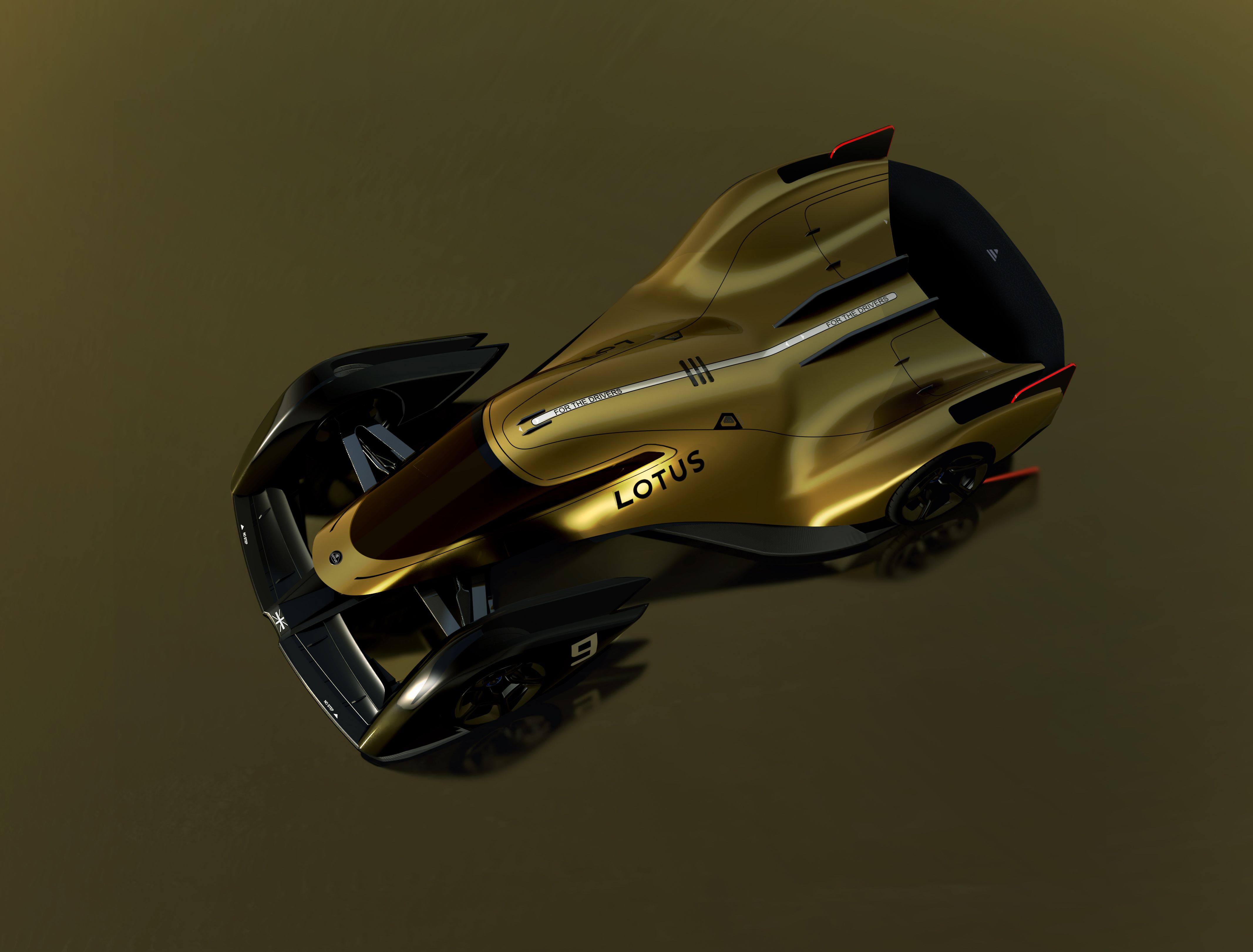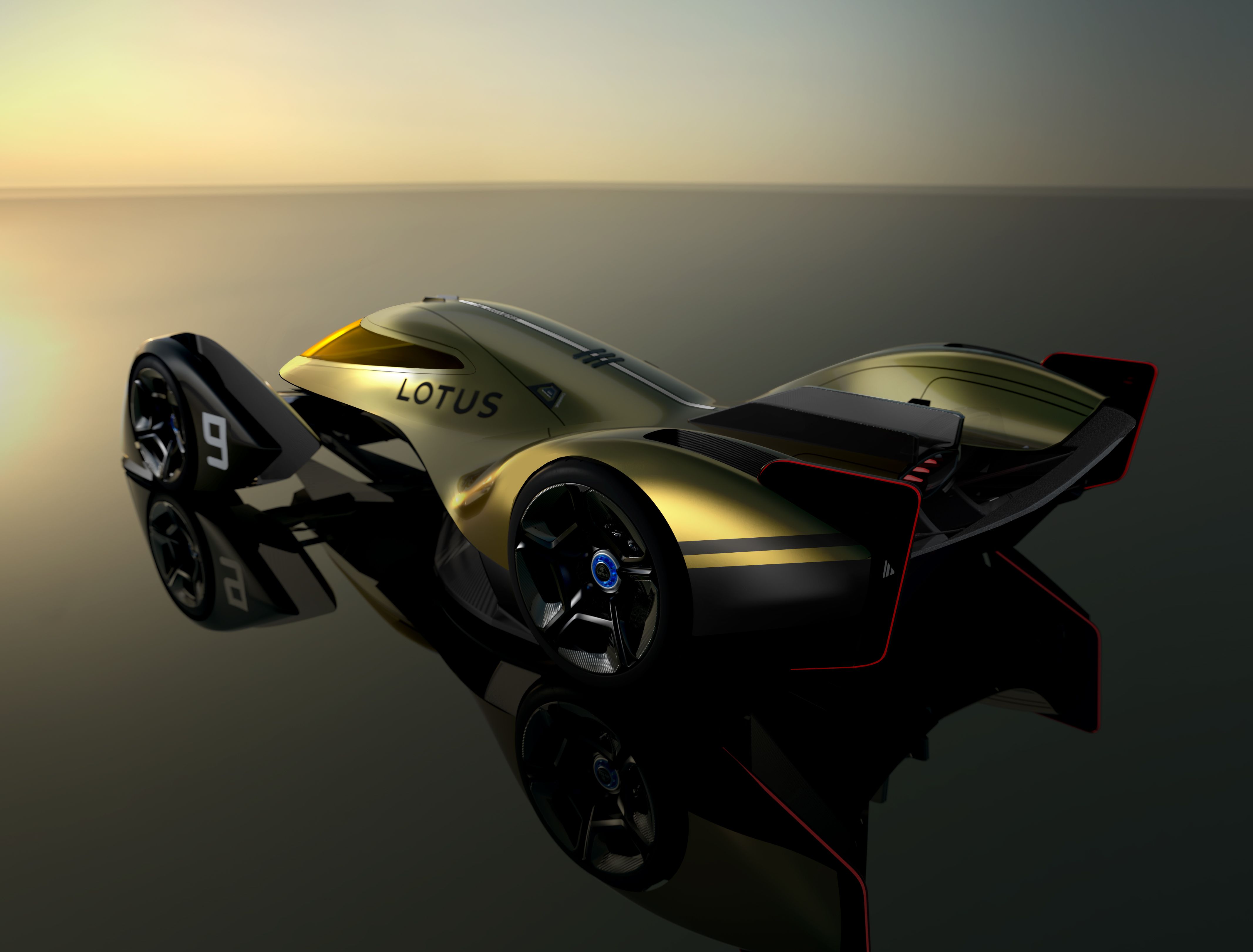The wind of change is blowing over Lotus. The British sports car maker is cleaning up its range to make room for a new entry and the Evija all-electric hypercar is just some whiskers away from making its market debut. And it looks like when they’re not working hard on production models, Lotus’ designers have the green light to work on concept cars such as the E-R9.
It is Lotus’ vision that by 2030, endurance race cars competing around the world will look like the E-R9. Without offering concrete details, the carmaker tells us that the E-R9 would sport an active aero system with morphing body panels and “vertically mounted control surfaces to assist with high-speed cornering.”
What’s more, the design study was developed by Richard Hill, who is Lotus’ chief aerodynamicist, and Louis Kerr, head platform engineer for the Evija. In charge with the looks of the E-R9 was Russell Carr, who is Lotus’ director of design. It’s Carr that came up with the delta wing profile and the fighter jet-style canopy cockpit.
Heck, the E-R9 badge itself has a meaning. E and R are for Endurance Racing, obviously, while the number 9 is a nod to the Le Mans-racing Lotus Mark IX from 1955, an aluminum-body racer car of which only around 30 units were built.
There’s also another catch in honoring the Mark IX: if the E-R9 will indeed go racing in 2030, the moment would coincide with the 75th anniversary of the Mark IX. So come on, Lotus, just make it happen.



